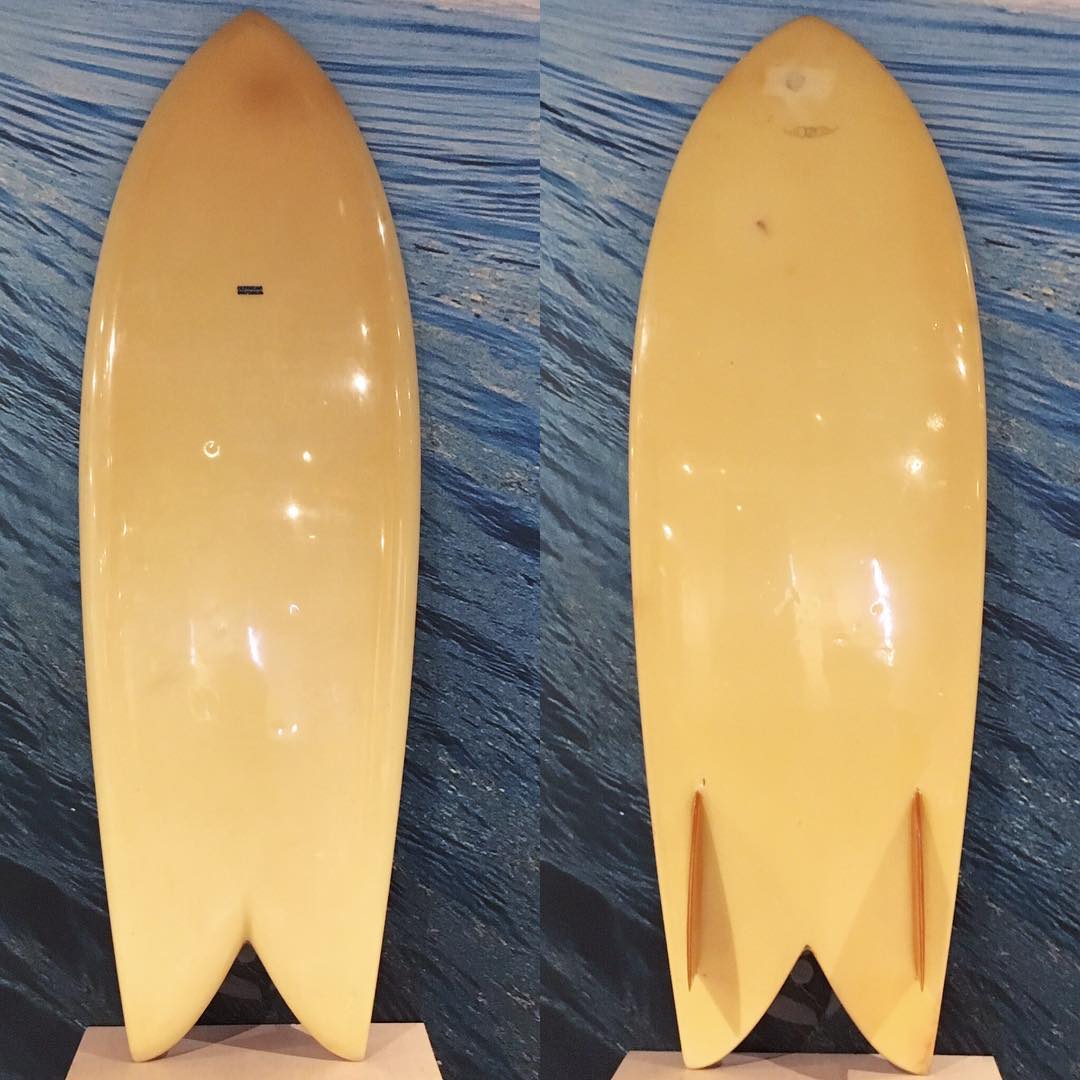The twin fin fish surfboard first hit the scene right here in San Diego, CA. Designed by Steve Lis, in 1967, the fish was originally designed to be ridden as a kneeboard. The short, thick, wide design allowed for new maneuvers in the punchy waves found in the San Diego area. Little did Steve know at the time, but his new design would go on to change the history of surfing forever.
An avid kneeboarding, and shaper, Steve took to the shaping bay to design the ultimate riding machine, for himself. He wasn’t focused on going mainstream, or coming up with a design to sell all over San Diego. Steve wanted one thing and one thing only, a better board for himself. Not to say he didn’t care about others in the water, he just wanted to make the best kneeboard he could.
The best designs often come out of the need to solve a problem. Steve’s problem was, he hated that his fins would hang off the back of his traditional pintail shape and cause drag. Gosh darnit, we want to go FAST! We don’t have time to let our fins drag in the water. So, as he went about creating his design, he pulled inspiration from other designs, and implemented some ingenuity. The long rail line of the traditional pin tail was borrowed and split in two, creating what is now so commonly seen on fishes today, the deep swallow tail.
With a wide tail and split design, the fish allowed for Steve to rest his swim fins on the board and eliminate the unwanted drag. The first tail design was actually crafted using one of his churchill fins for the shape of the swallow tail itself.
Overall, not much has changed from the original fish design of 1967. There have been many tweaks and new iterations over the years, however, the basic shape and concept are much the same. Flat, wide, and fast. The "traditional" fish surfboard lives on today.
With a wide tail, flat rocker and short in length, the fish is a must have in every quiver. Fishes can be ridden in the hollowest waves on earth to the windblown mushy beach breaks around the globe.
Fun for all surfers, it’s safe to say, fish surfboards will be around for many years to come.

